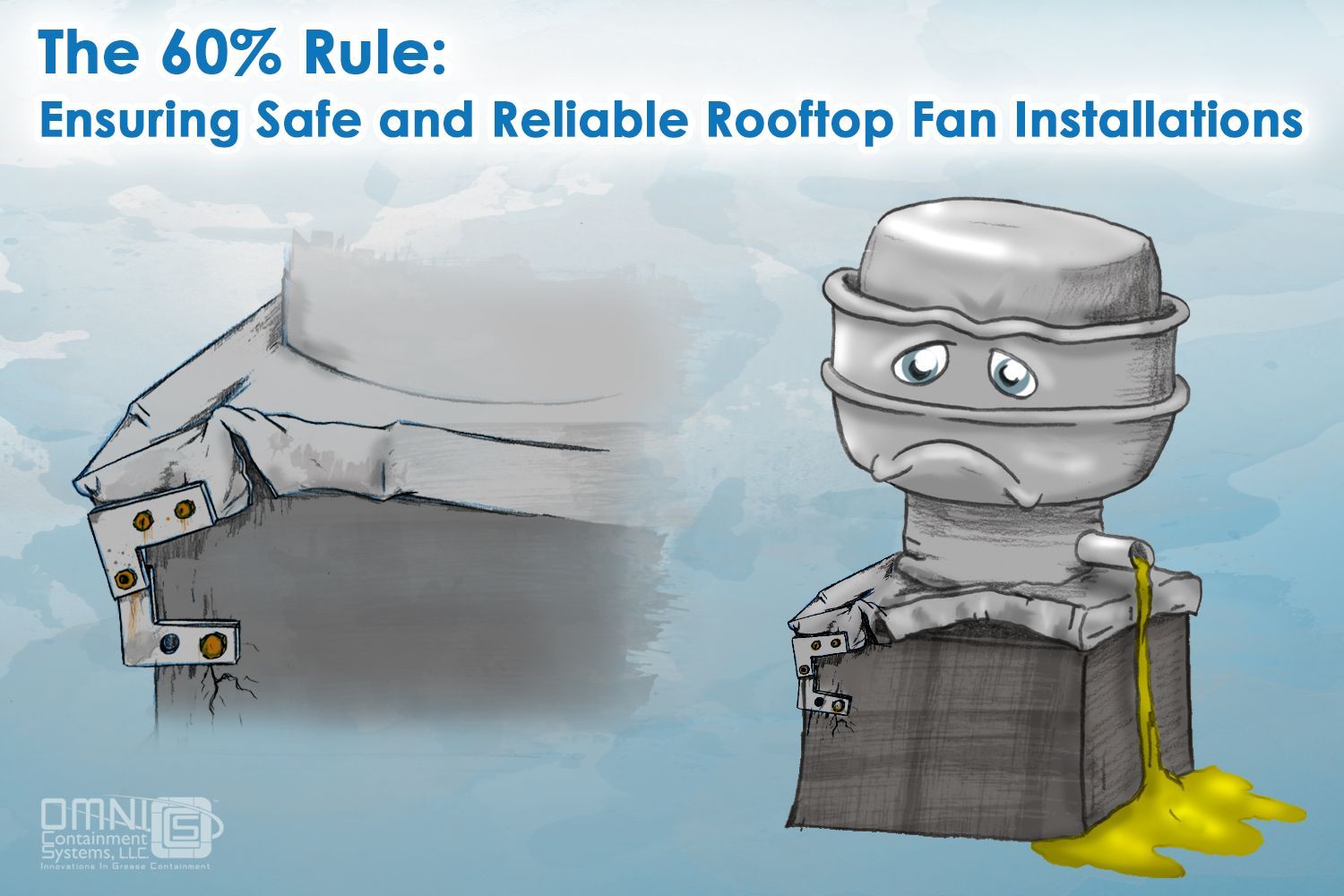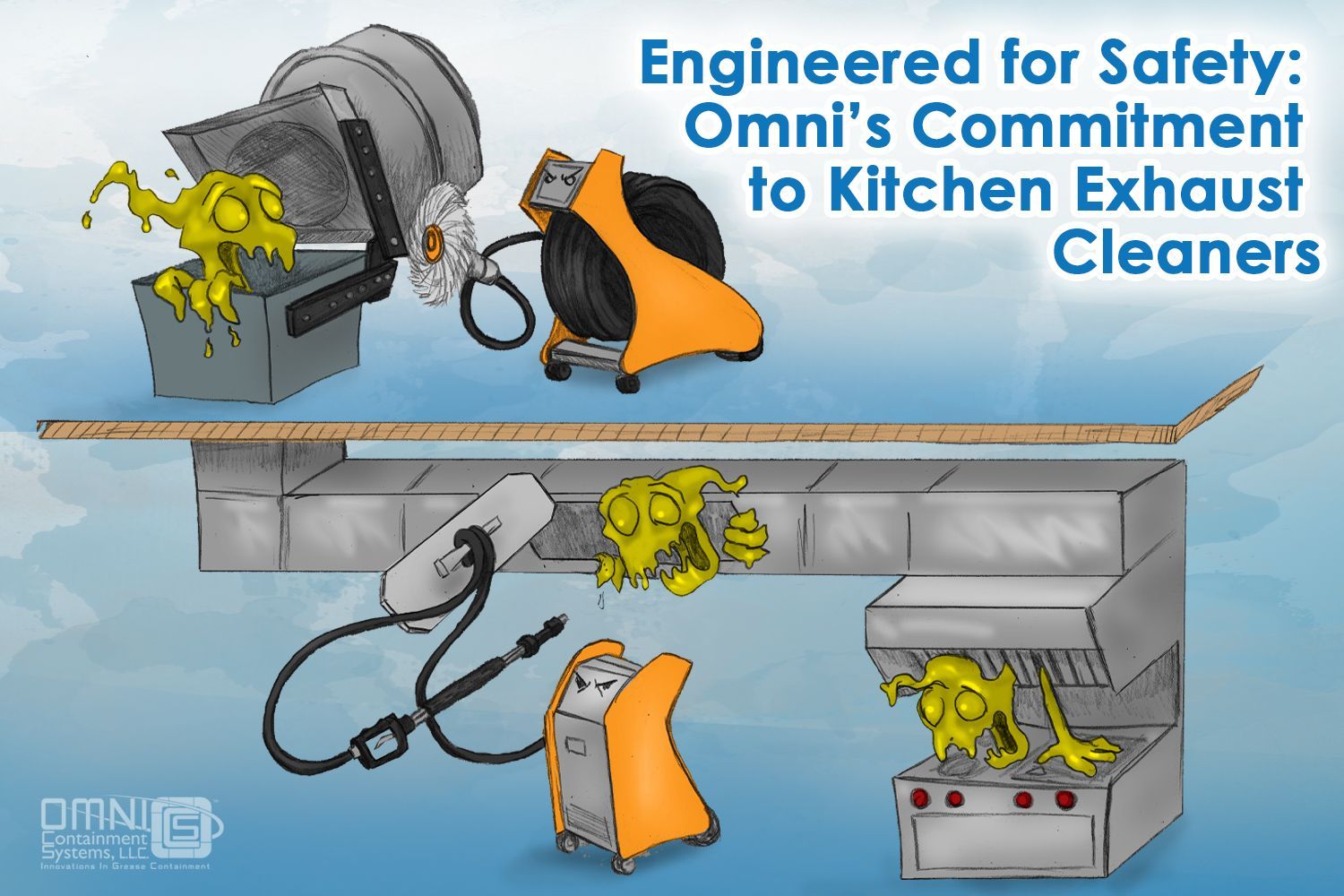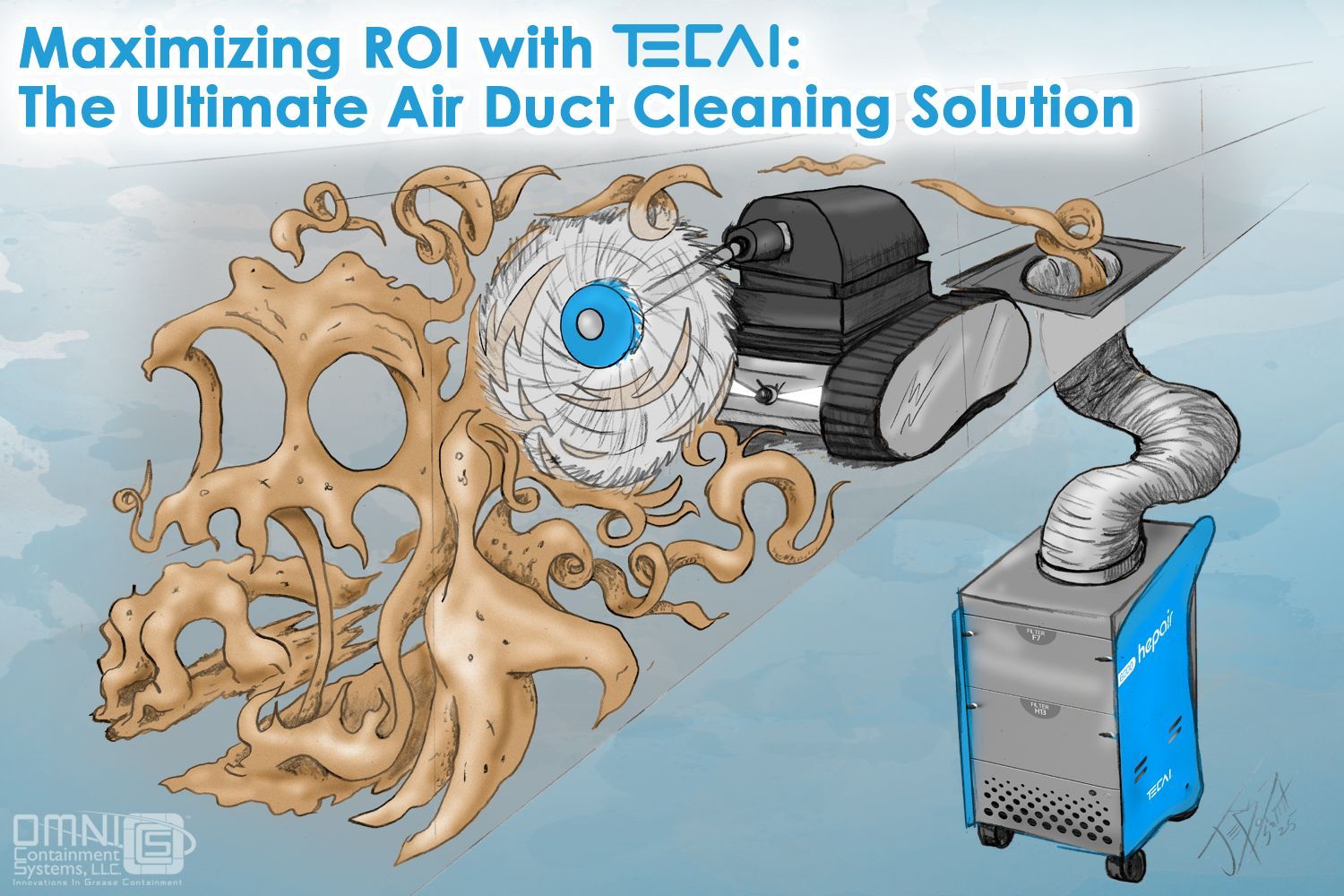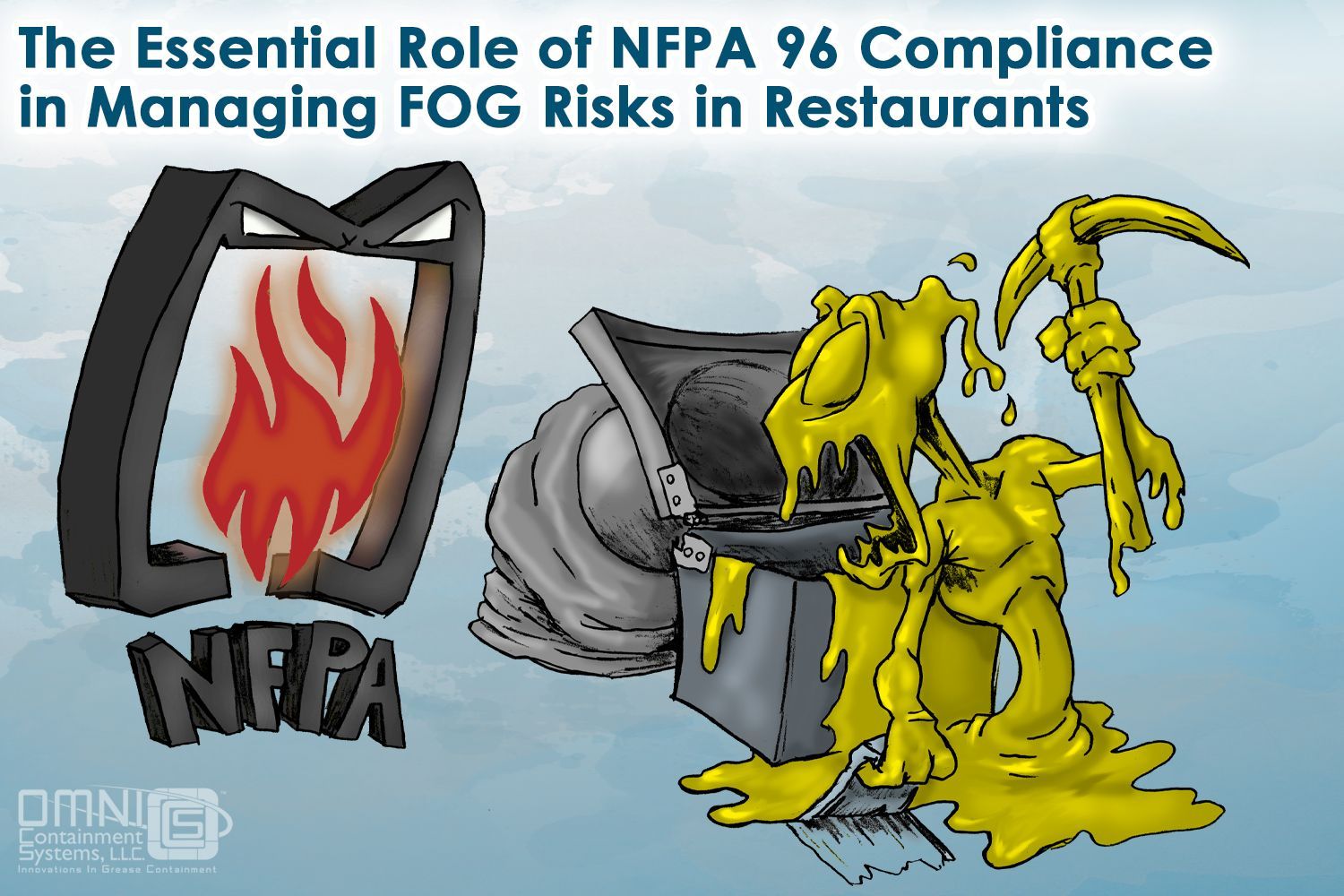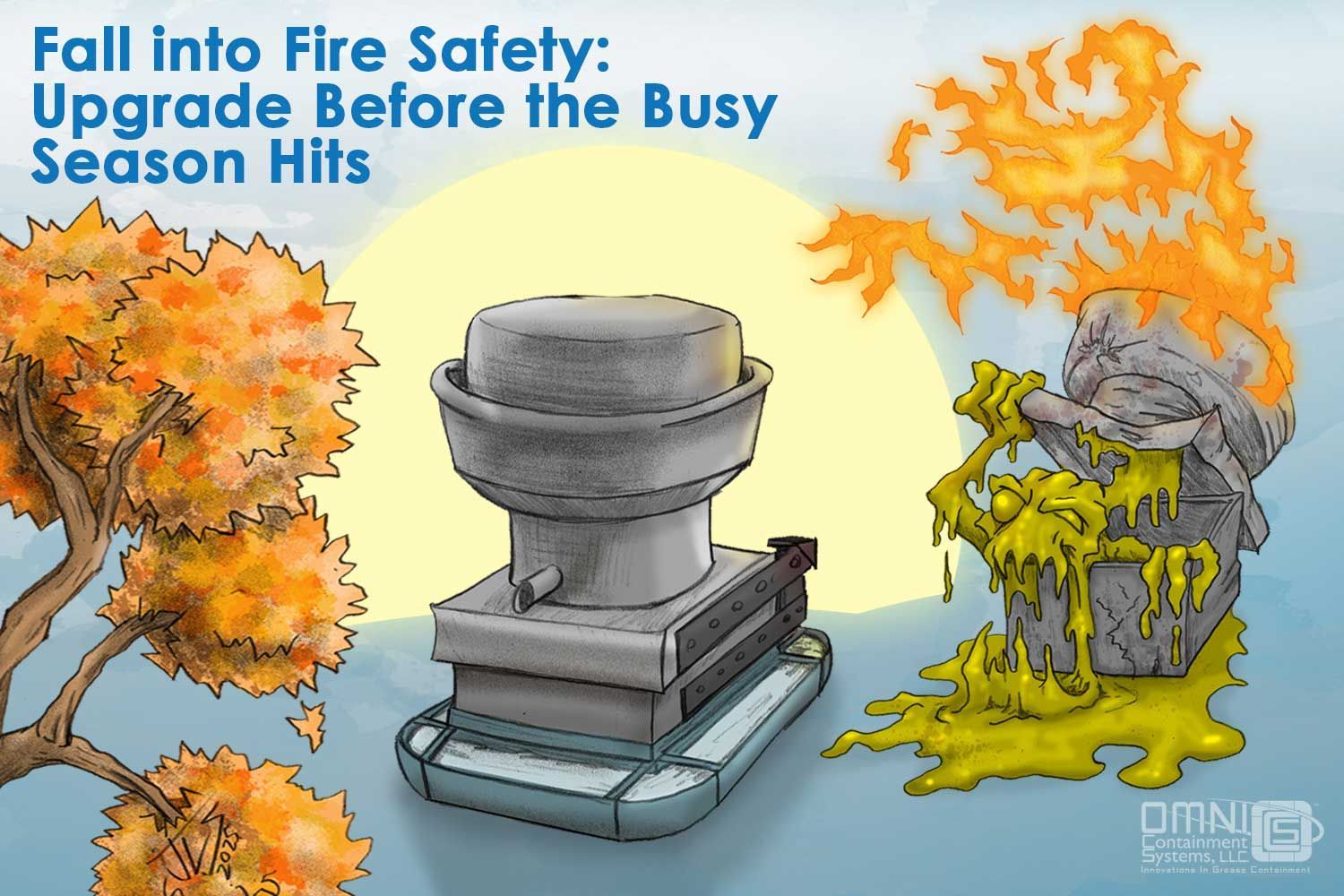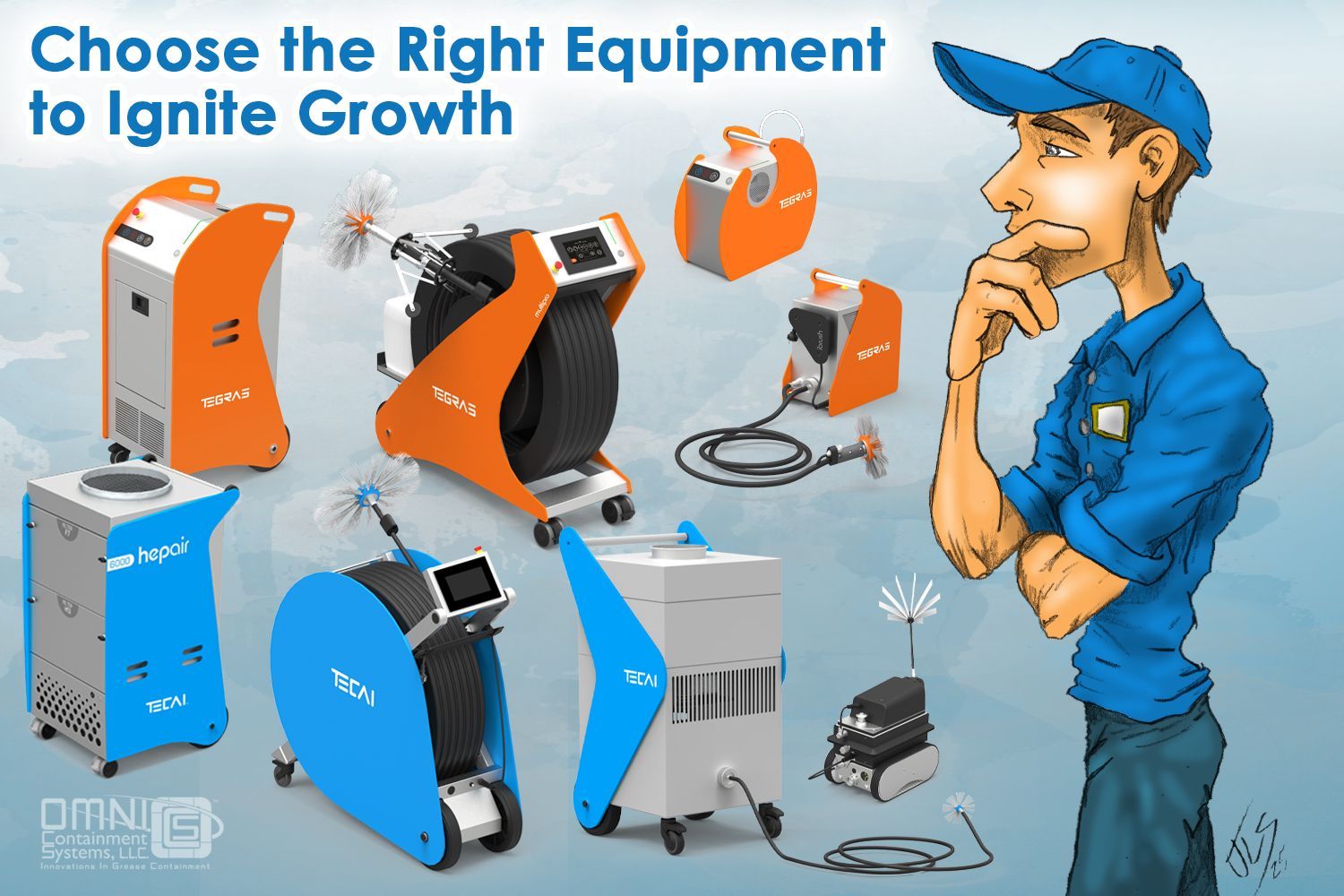
Why Proper Rooftop Fan Hinging Protects More Than Compliance
When it comes to rooftop upblast fan maintenance, the phrase “you get what you pay for” has never been truer. While installing any hinge may check a box, installing the
right hinge can dramatically change the safety, longevity, and performance of your entire kitchen exhaust system.
At Omni Containment Systems, we’ve seen firsthand the dangers of under-spec’d or improperly installed hinges, and we’ve built a product line designed to prevent them. Whether you’re a commercial kitchen operator, a KEC technician, or an AHJ reviewing a system, this guide breaks down why hinge selection matters, what NFPA 96 really requires, and how to choose the right solution for your setup.
What’s the Purpose of a Hinge on a Rooftop Fan?
To the untrained eye, a hinge might look like a minor mechanical accessory. But for rooftop upblast exhaust fans, especially those exposed to grease-laden vapors in commercial cooking environments, hinges are essential for both function and safety.
Here’s what a proper hinge does:
- Allows technicians to safely tilt the fan for inspection and cleaning without needing to remove or lift it off the fan curb
- Prevents physical strain or injury from lifting heavy fans
- Reduces risk of damage to the fan housing, curb, and roof membrane
- Maintains a secure, repeatable seal alignment between fan base and duct
- Meets NFPA 96 code compliance when installed correctly with a hold-open retainer
Most upblast fans weigh anywhere from 50 to several hundred pounds. Without a hinge, that fan must be lifted and set aside on the roof, posing safety risks and potential for long-term structural damage.
Why NFPA 96 Doesn’t Just Recommend Hinges—It Requires Them
The 2024 edition of
NFPA 96, the national standard for ventilation control and fire protection of commercial cooking operations, states:
7.8.2.1(8): Rooftop terminations shall be arranged with or provided with a hinged upblast fan, flexible weatherproof cable, and service hold-open retainer to permit inspection and cleaning.
8.1.2.1: Approved upblast fans with motors in the airstream shall be hinged and listed for this use, and supplied with flexible, weatherproof cable and service hold-open retainer.
In short: if your fan is not properly hinged, and that hinge does not include a hold-open mechanism, your system is out of compliance. And many “hinge-like” solutions, such as bolted hardware-store brackets or loosely mounted hinges without locking supports, do not meet this standard.
Non-compliance doesn’t just risk a failed inspection. It increases liability, damages equipment over time, and puts workers at risk.
The Risks of Using the Wrong Hinge
Using the wrong hinge (or worse, skipping a hinge altogether) introduces real-world consequences. At Omni, we’ve seen it all:
- Crushed Conduits: Fans without a hinge must be placed on their side during service. One slip, and the fan can crush electrical cables or fan curbs, leading to downtime and expensive repairs.
- Damaged Seals: Improper hinging causes fan base misalignment. Over time, this creates air leaks that reduce system performance and allow grease or smoke to escape into the roof cavity.
- Injury Risks: Chains, cables, or makeshift props are often used to “hold” a fan open. They are prone to failure when exposed to weight or wind, putting technicians in harm’s way.
- Roof Membrane Damage: Sharp corners and dropped fan bases can tear through expensive membrane materials, leading to leaks and premature roof failure.
These issues can be avoided entirely by choosing the correct hinge system upfront.
What to Consider When Selecting a Hinge
No two rooftops are the same, and not all fans are configured the same. That’s why hinge selection needs to be based on fan dimensions, curb size, weight distribution, and access requirements. Key factors include:
Fan Base Size and Geometry
Measure the fan base length and width. At Omni, we recommend your hinge arms cover at least
60% of the fan base, a longer span provides more strength and stability, especially for heavy fans
- Hinge Arm Strength and Load Rating
Make sure the hinge is engineered to support the full weight of your fan under real rooftop conditions. A small “door hinge” style isn’t going to cut it.
- Service Hold-Open Retainer
NFPA 96 requires that the hinge locks open during service. This feature must be built into the hinge, it can’t be a makeshift chain, rope, or bracket.
- Fan Mounting Type
Is the fan curb offset? Is it a side-wall mount? Does the fan rest over ductwork or transition ducting? These configurations all affect hinge placement and may require pivot arms or adjustable mounting plates.
- Environmental Exposure
Is the system exposed to high wind, snow loads, or coastal moisture? Use materials and coatings designed to withstand the conditions.
Which Omni Hinge is Right for You?
At Omni Containment Systems, we’ve developed a complete range of hinging solutions to match nearly every commercial exhaust setup:
- Super Hinge
Our most robust hinge, ideal for large and heavy upblast fans. It offers maximum support, a full-length hinge arm, and includes a service hold-open retainer. Built to exceed code. - Quick-Fit Super Hinge
Engineered for easier installation, especially when time is tight. It offers the strength of the Super Hinge with more installation flexibility. - Econo Hinge
A cost-effective solution for small fan systems where weight and size allow for a lighter-duty hinge, still meeting NFPA compliance.
Need help identifying the right model? Use our online Print & Fit Form or reach out to our team.
Pro Tips for a Proper Install
Getting the right hinge is only half the battle, installing it properly ensures your system performs as intended.
- Always measure the full fan base, not just the wind band.
- Take photos of the existing setup for reference and bracket placement.
- If access is limited, choose an adjustable or quick-fit model.
- Replace any damaged conduit or cables during the hinge install.
- Use factory-provided installation templates when available.
- A proper hinge installation saves time and protects your equipment for years to come.
Hinge Smarter, Not Harder
At the end of the day, hinging is not a "set-it-and-forget-it" accessory, it’s a structural safety component. The right hinge transforms your rooftop fan into a serviceable,
code-compliant, and long-lasting part of your exhaust system.
When you install an Omni hinge, you’re not just satisfying an inspection. You’re investing in safer maintenance, longer equipment life, and peace of mind.
Don’t just hinge it. Hinge it right, with Omni.
Share This Blog Post!

